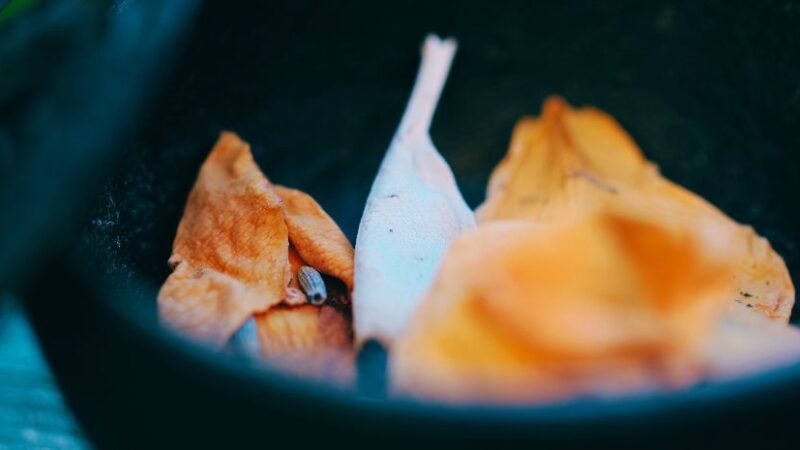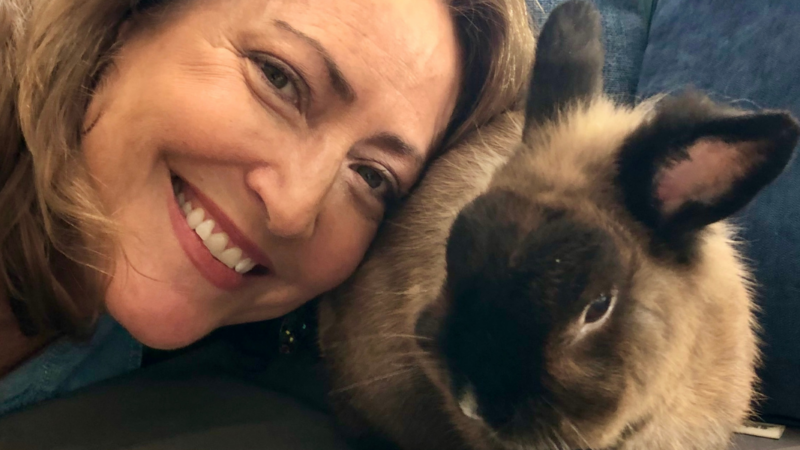Do you know what you want? … with Adyashanti

Adyashanti
One of the most important questions we can ask ourselves on the spiritual journey, according to Adyashanti, is: What is it that I really want? Spending some time sitting quietly and contemplating this question – allowing it to take us into the depths of being – is a practice that each of us can do to learn more about what it is that is really inspiring and driving us at the deepest levels. Many of the world’s great wisdom traditions suggest a similar inquiry, and consider this question the foundation of any authentic spiritual life.
So, friends, what is it that you really want? When all is said and done, what is your heart calling out for, where are you being pulled, what is pushing you, what will this life sweetest, most precious, rare human life be organized around?
We shot this video with our dear friend Adya at The Wake Up Festival last year, where Adya opened our gathering in the gorgeous Rocky Mountains. We’re really happy that Adya will be joining us again this year, and hope to see many of you there.
Glimpse Practice: Dynamic Stillness with Effortless Mindfulness
 Deliberate mindfulness instructions often begin with physical posture, concentrating on how to place your body in order to sit physically still, with your back straight. In this effortless mindfulness variation, we will focus on stillness at the subtler levels of experience to feel a different kind of dynamic stillness that can include movement.
Deliberate mindfulness instructions often begin with physical posture, concentrating on how to place your body in order to sit physically still, with your back straight. In this effortless mindfulness variation, we will focus on stillness at the subtler levels of experience to feel a different kind of dynamic stillness that can include movement.
GLIMPSE The Four Postures of Dynamic Stillness
1. Find a way to sit comfortably. Take a few deep breaths and relax, as if you have just finished a day’s work. Become aware of your body and breath as if they are in your awareness. Become aware of the space around you, the feeling of contacting what you are sitting on, the feeling of your body, and the motion of breath happening by itself.
2. Notice your whole body breathing. Notice that breath is happening by itself. And now notice that awareness is also happening by itself. Notice how awareness is spacious like the sky, already aware from outside and within your breathing body.
3. Begin to feel the first stillness of your body sitting. What is it like to be sitting on the earth with the feeling of gravity and stillness? Nothing to do and nowhere to go . . . just now. Rest your body in this one place with the stillness like a mountain.
4. Now be aware of the second stillness of space. Feel the movement of your breath. Notice the stillness of space in the pause between breaths. Feel the space in the room and between objects. Rest into the space within the moving atoms in your body. Feel the space and stillness in which everything arises and passes like clouds and birds in the sky-like space within and all around.
5. Become aware of the third stillness of water. Feel the deep knowing that your body is mostly water. Feel the depth of water inside and all around. Breathe in and feel that the ocean of water is deep and still within, even while there are waves of movement and flow.
6. Now feel the fourth stillness of awareness. Feel how that which is aware does not come and go, while everything else changes. Rest as this timeless awareness, which is what all the other stillness and movement are made of. Rest deeper than sleep as the awareness that is wide awake. Find that which is already resting without any effort to rest. Rest as the invisible awake awareness that is here now arising as space, stillness, energies, and forms.
This is an excerpt from The Way of Effortless Mindfulness: A Revolutionary Guide for Living an Awakened Life by Loch Kelly.

 Loch Kelly, MDiv, LCSW, is a leader in the field of meditation and psychotherapy. He is author of the award-winning Shift into Freedom and founder of the Open-Hearted Awareness Institute. Loch is an emerging voice in modernizing meditation, social engagement, and collaborating with neuroscientists. For more, visit lochkelly.org.
Loch Kelly, MDiv, LCSW, is a leader in the field of meditation and psychotherapy. He is author of the award-winning Shift into Freedom and founder of the Open-Hearted Awareness Institute. Loch is an emerging voice in modernizing meditation, social engagement, and collaborating with neuroscientists. For more, visit lochkelly.org.
Buy your copy of The Way of Effortless Mindfulness at your favorite bookseller!
Sounds True | Amazon | Barnes & Noble | Indiebound

A Meditation + Writing Exercise to Conquer Your Fear

To prepare for the dog days of summer, we move from amusement to audacity. Being a dog owner and lover, I particularly enjoy the expression “dog days.” I always picture a pile of lazy dogs panting away in the shade of a chestnut tree, waiting out the heat of the day to go for an evening walk. Venturing into the heat of creative and spiritual practice takes courage; it is an audacious undertaking.
This July, I invite you to take on a “BHAG”—a Big, Hairy, Audacious Goal. Write forth your truth and wake up to expanded awareness in the process. Whether that means starting a journal or writing a poem, novel, memoir, or letter to your grandmother, audacity will drive you forward. I want you to commit here and now to do your best in any given moment. Move forward with your best intentions of creativity and spiritual awakening at heart. This combined meditation and writing practice will help you get there.
A Meditation on Audacity
Let’s begin with where we are—in a grounded and courageous place, fully embodied. Find your comfortable place to sit. Rest your hands easily in your lap and your feet flat on the ground or cushion. Gently close your eyes. Take a few breaths inward and release. Find that natural rhythm of your breathing, connecting with your breathing body. Tune into your immediate sensory experience, just noticing what your experience is right in this moment. Let your breath be your anchor and ground.
See if you can bring to mind a particularly scary or vulnerable situation. Think of one in which you recently felt exposed, sensitive, even fearful; not one in which you were in a dangerous situation, but a memory of you putting yourself out there in some way—confronting someone, speaking to a group, asking someone new out on a date. As memories of the situation come to you, breathe deeply into your belly and know that you are safe now, breathing here in this moment in this body. If you need to, you can open your eyes, but try to remain grounded in your breathing body. Notice the rush of sensations and allow whatever arises to arise with love, patience, and compassion. Be gentle with yourself and remember that you are safe. See if you can stay with the feelings and simply explore how your fear or discomfort exists as a bodily sensation.
Notice where in your body you feel them. Breathe nurturing air into those places. Allow yourself to become familiar with the sensations of fear and vulnerability without the need to disconnect, distract, or avoid altogether. Be patient and kind with yourself as the emotions and feelings stream through. Gently note any physical changes: increased body heat, increased heart rate, tingling in your arms, increased sweating, and so on. Notice how the sensations linger, change, and dissipate. Become curious and open while kindly grounding yourself in the breath.
Put both hands on your heart, left on top of right, and take a deep breath. Say to yourself, “May I be well, may I be at peace, may I be bathed in the light of lovingkindness and compassion right now.” Take another deep breath, exhale, and release your hands. Bring them back together, palm to palm, at your heart and bow to yourself in gratitude for your courage and love. Open your eyes to complete the meditation.
You might try this meditation for five minutes at first and then extend it as you feel more audacious and courageous. The more you allow the feelings to arise and exist, the more familiar you will become with them. In turn, you will be better able to let them go and dissipate and see them for what they are—waves of energy and information arising and passing away.
Now for the writing . . . Write down three things you can do in the next month that scare you. They don’t have to be drastic acts such as speaking in front of 400 people. How about just sitting down to write that first scene of your novel? Typing up your first few poems? That can be scary enough. And these frightening endeavors don’t have to be related to writing. Maybe it’s a little terrifying to sit in meditation with your eyes closed for more than five minutes. Check in with yourself and see what’s a little scary for you—where can you push yourself a little further? Book a trip overseas, sign up for a rock-climbing adventure, agree to read at your local open mic. Keep in mind that you don’t have to actually do these things right now. Simply start by writing them down and sitting in their presence for a bit. Then you can take action to feel your fear and do it anyway!
This excerpt has been shortened and adapted from Writing as a Path to Awakening: A Year to Becoming an Excellent Writer and Living an Awakened Life.

ALBERT FLYNN DESILVER is an internationally published poet, memoirist, novelist, speaker, and workshop leader. He has published several books of poetry, Beamish Boy, and his newest book, Writing as a Path to Awakening. He teaches at the Omega Institute, Esalen, Spirit Rock, and writing conferences nationally. He lives in Northern California. For more, visit albertflynndesilver.com.

Buy your copy of Writing as a Path to Awakening: A Year to Becoming an Excellent Writer and Living an Awakened Life at your favorite bookseller!
Sounds True | Amazon | Barnes & Noble | Indiebound

Meet the Author of . . . Spark Change
The Author
Jennie Lee is the author of Spark Change: 108 Provocative Questions for Spiritual Evolution. In addition to being an author, she is a recognized expert in the fields of yoga therapy and spiritual living. She has taught classical yoga and meditation for more than 20 years, and coached private clients in the practices that integrate life spiritually, mentally, emotionally, and physically. She is also the author of the award-winning books True Yoga: Practicing With the Yoga Sutras for Happiness & Spiritual Fulfillment and Breathing Love: Meditation in Action. She lives in Hawai‘i with her husband and bunnies. For more, see jennieleeyogatherapy.com.
The Book
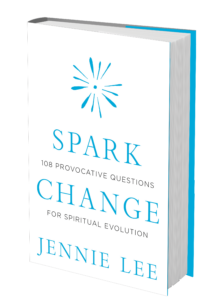 It’s been said that finding the right question is as important as finding its answer. As author Jennie Lee writes, “Quality questions lead to quality answers. Questions promote deeper thought, connection, authenticity, and humility.” In Spark Change, Lee shows you how to identify your most important personal questions and explore how they might redefine the trajectory of your life.
It’s been said that finding the right question is as important as finding its answer. As author Jennie Lee writes, “Quality questions lead to quality answers. Questions promote deeper thought, connection, authenticity, and humility.” In Spark Change, Lee shows you how to identify your most important personal questions and explore how they might redefine the trajectory of your life.
Send us a photo of you and your pet (and let us know if your pet had any role in helping you write your book)!
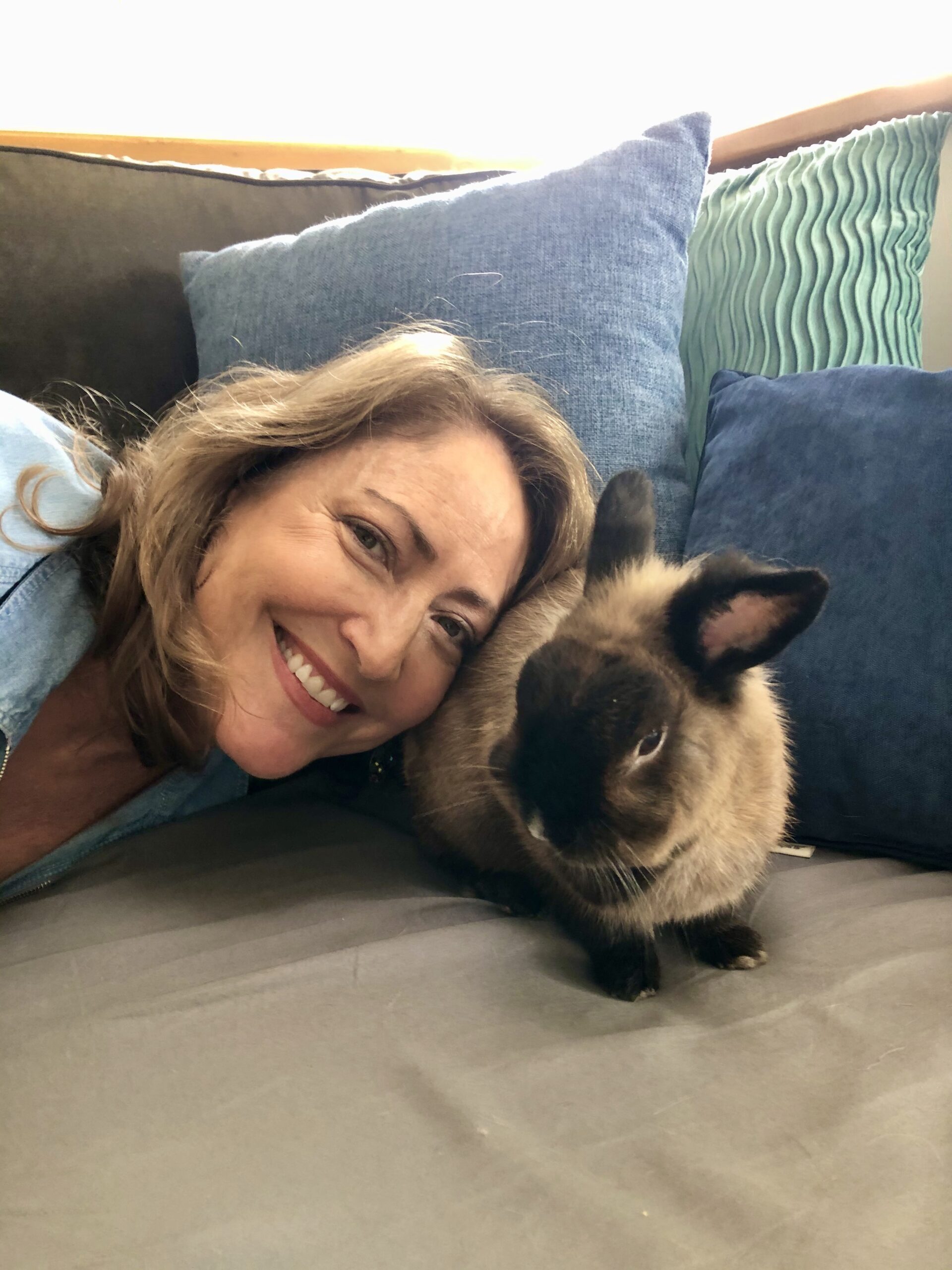
Most evenings I share a little couch time with my house bunny Toki. As prey animals, rabbits sense energy, so if I have had a tense day and carry any agitation into snuggle time, Toki will nip my leg as if to say, “calm down!” Relaxing with the bun reminds me to let go of what I can’t control, and to practice being peaceful in the present moment. Toki time in the evening reinforces what I write about in Spark Change—the necessity of self-reflection and accountability for what needs changing within myself. And he is a darn cute teacher.
What is something about you that doesn’t make it into your author bio? It could be something that impacts your work, or something totally random and entertaining!

Although I grew up in Southern California, I was always a bit afraid of the ocean. When I moved to Hawai‘i, I wanted to get beyond this fear, so I taught myself how to surf. Now, paddling out at dawn into the gorgeous turquoise water is one of the best things about my day. The focus that is required to catch a wave is an apt metaphor for accomplishing anything in life, and the exhilaration that comes when I make the drop and take the ride is pure joy.
What was your favorite book as a child?
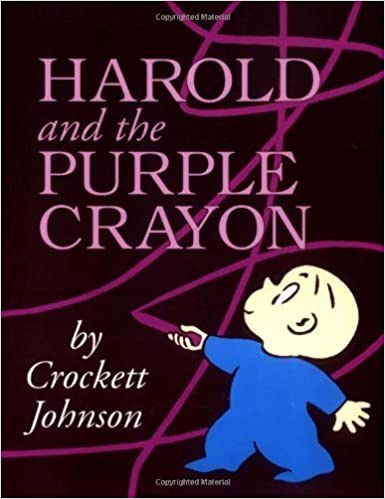
As an only child, I played alone a lot. I loved Harold and the Purple Crayon because Harold drew himself into his own adventures, created his own frightening dragons, and saved his own life by imagining a new way home. Imagination is essential to living a creative life and this story illustrates how we craft our experiences through our thoughts. Ever since childhood, I have been learning how to design, with greater intention, the life of my dreams by eliminating dead ends in my thinking and replacing them with new roads home.
Learn More
Sounds True | Amazon | Barnes & Noble | Bookshop | IndieBound
Kintsugi: Filling in the Cracks of Your Life with Gold

The time has come to get started on the biggest work you will create in your life, the most important house you will ever own, the home of your soul. Let’s rebuild your life with strong materials of confidence, self-esteem, and courage. I want you to be a free and confident person, and to achieve that, we need to work hard.
Begin by getting to know yourself. You have no idea what you are like or what you are capable of achieving. During the most vulnerable years of your life, people made you believe that you weren’t capable, that you couldn’t do things, that you didn’t know how to, and that you were worthless. They ignored you, overlooked your achievements, and punished you, and all that has wreaked havoc on your self-image. Look for silence and try to reconnect with your essence. Discover yourself, and explore yourself. It’s no easy task, I know, but that’s no reason to avoid it. Observe yourself without judgment, and get to know yourself a little better each day, the same way you would with a new friend, car, or house.
Start analyzing. Stop being afraid, stop worrying, and stop running away without looking back. Forget about fear, stop reacting, and start analyzing. That is the key: to analyze instead of reacting. Life is a dynamic process, which is good news because you can grow, learn, change, and above all gain confidence.
Contextualize what happens to you without rushing in your appraisals. Now you are capable of identifying when you are carrying out partial appraisals based on fear or a negative self-image that do nothing but activate your alarm systems and generate anxiety for you. The first step toward gaining confidence is understanding, the second is detection, and the third is management. Engage in rational thinking to avoid the tunnel vision effect that a closed and imperceptive mind has tried to contaminate your soul with. Simplify reality, and eliminate the fear factor. I propose an exercise of imagination. Imagine you are at a meeting expounding your point of view on a project, and that suddenly your boss takes out a piece of paper and starts taking notes. You don’t actually know what they are writing, but if you feel afraid, you will believe they are taking notes on the things they didn’t like, when you don’t really know. Perhaps they loved it. Or perhaps they have simply remembered a task they still have to do. So when you don’t know something for sure, don’t rule out any of the options, either negative or positive. This, precisely, is what tunnel vision consists of.
You have many more virtues than the ones you imagine, and you are capable of many more things than you may believe.
Learn more about this powerful practice of healing trauma in Kintsugi: The Japanese Art of Embracing the Imperfect and Loving Your Flaws by Tomás Navarro.

 Tomás Navarro is a psychologist who loves people and what they feel, think, and do. He is the founder of a consultancy practice and center for emotional well-being. He currently splits his time between technical writing, training, consultancy, conferences and advisory processes, and personal and professional coaching. He lives in Gerona and Barcelona, Spain.
Tomás Navarro is a psychologist who loves people and what they feel, think, and do. He is the founder of a consultancy practice and center for emotional well-being. He currently splits his time between technical writing, training, consultancy, conferences and advisory processes, and personal and professional coaching. He lives in Gerona and Barcelona, Spain.

